Earl Franklin Boatman
1920-2001
Earl Franklin Boatman was born August 8, 1920 in Fort Smith, Sebastian Co., Ar. to
Alexander Commodore & Carrie Janette Carson Boatman.
September 20, 1941 he married Anna Evelyn Martin, both residents
of Fort Smith, Sebasian Co., Ar. They divorced February 7, 1945
His second wife was Betty Mae Chauvie from California.
Earl enlisted in the US Navy September 30, 1942 and served until
December 7, 1946. He served on 2 ships during that time. Some
of his muster rolls from them are posted below. The date for his enlistment
comes from the "U.S. Department of Veterans Affairs BIRLS Death File, 1850-2010" but
his muster records start in 1939 which could mean that the 1942 date is a re-up of
his service. His service number is the same on all of the muster records.
Earl Frabklin Boatman passed away January 22, 2001 and is buried in the
Riverside National Cemetery at Riverside, California.
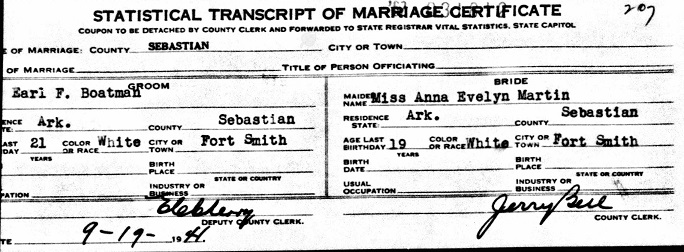
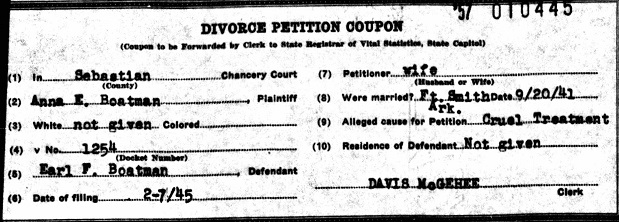
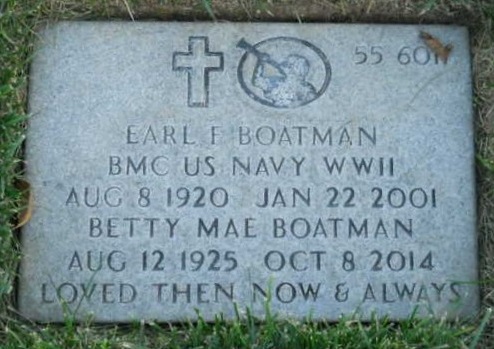
USS Tennessee
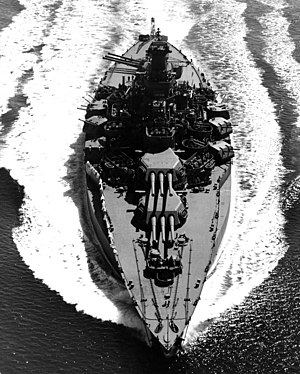
The U.S. Navy battleship USS Tennessee (BB-43) underway on 12 May 1943. Tennessee was damaged
in the Japanese attack on Pearl Harbor 7 December 1941 and was afterwards given a very extensive
reconst
1939
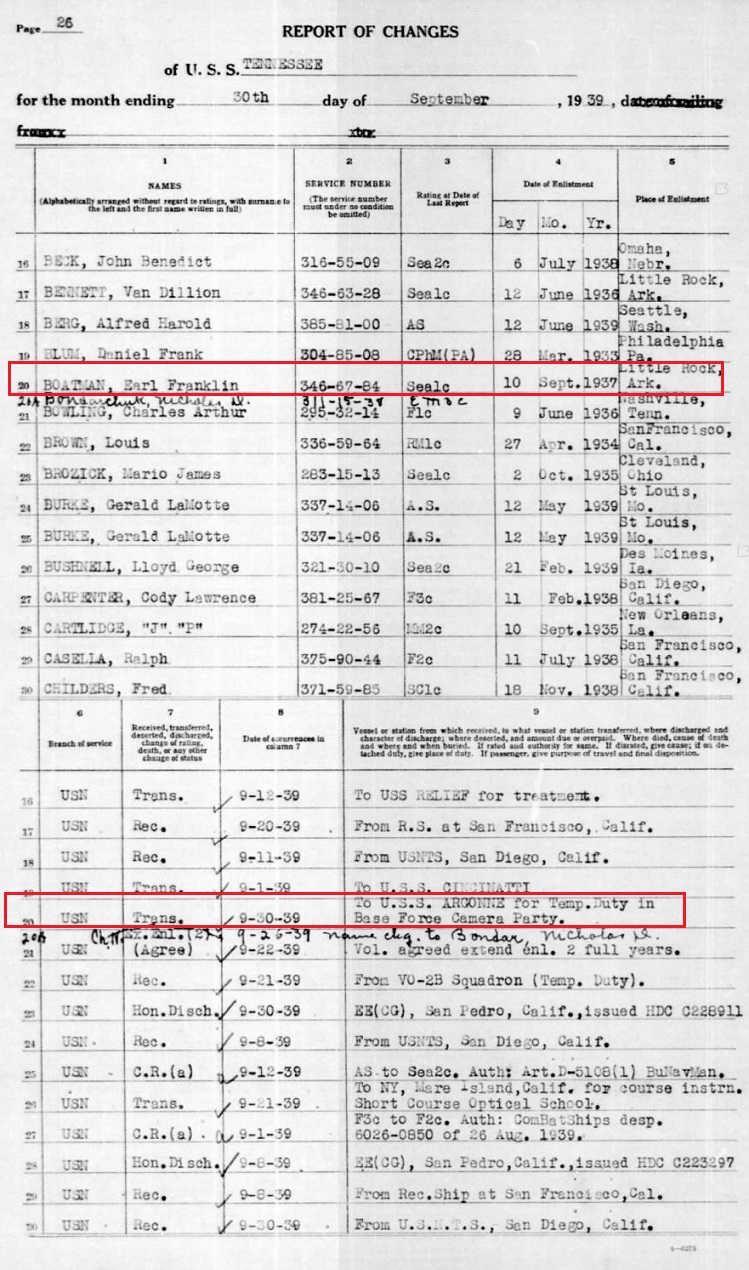
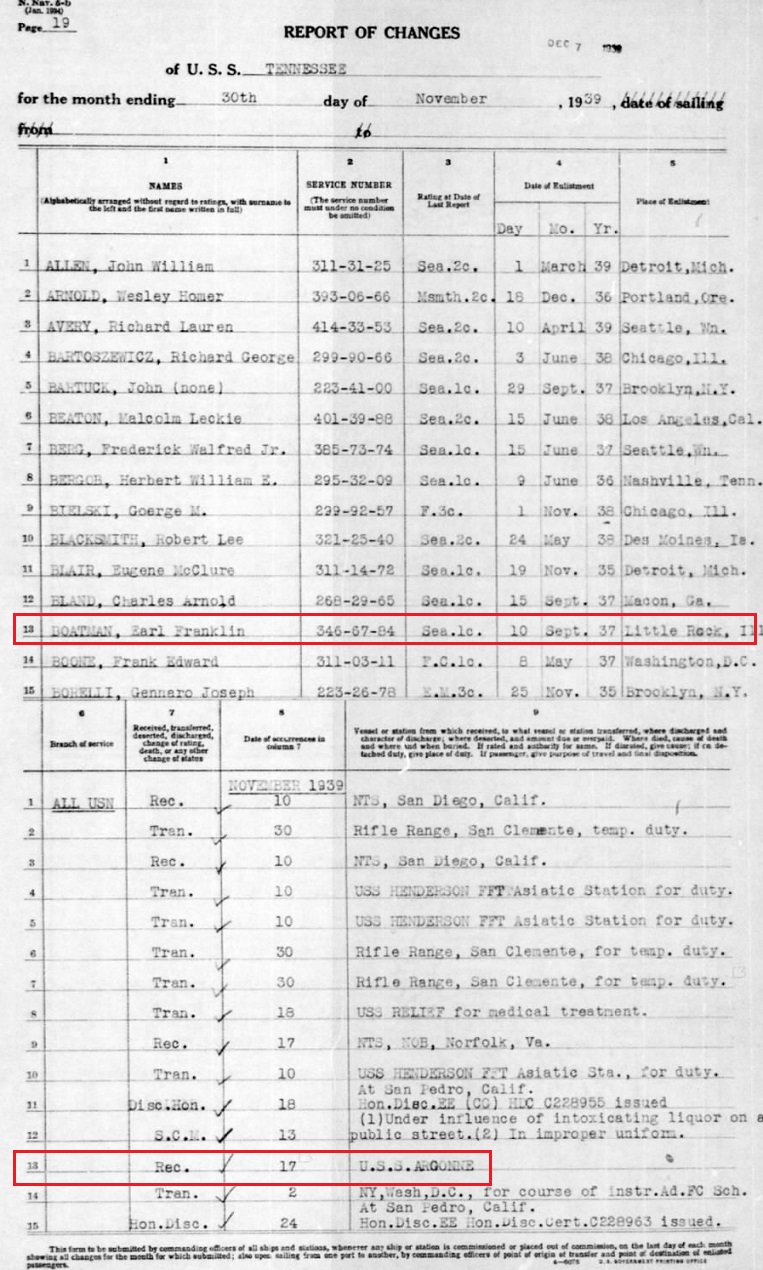
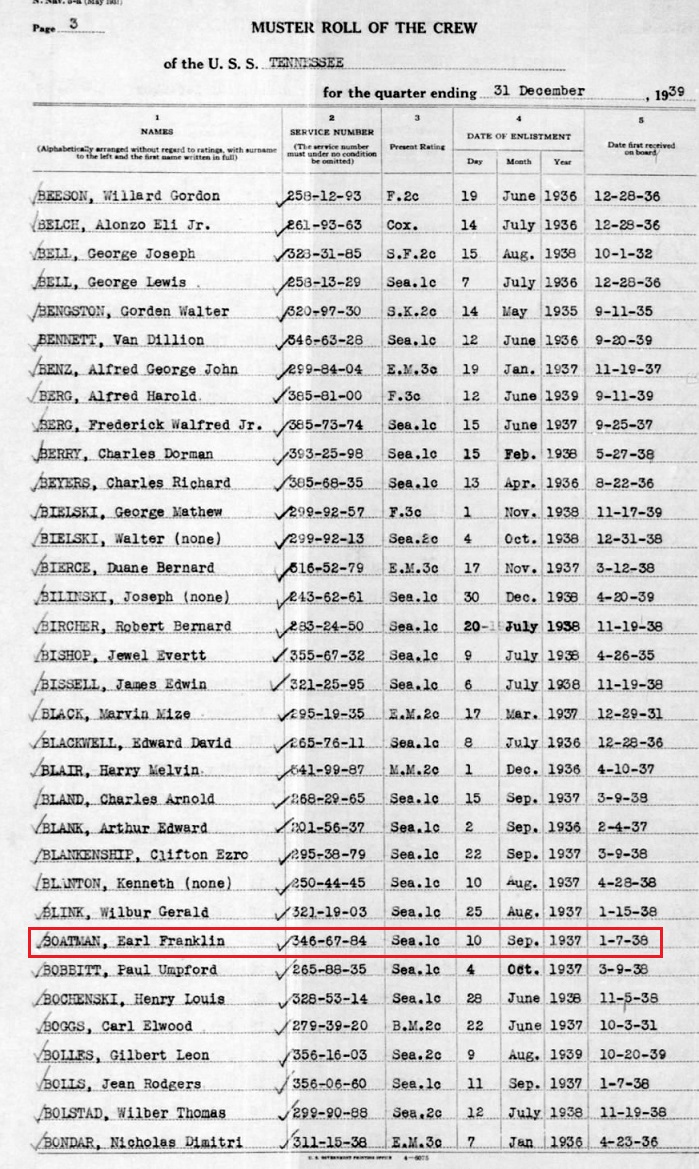
1940
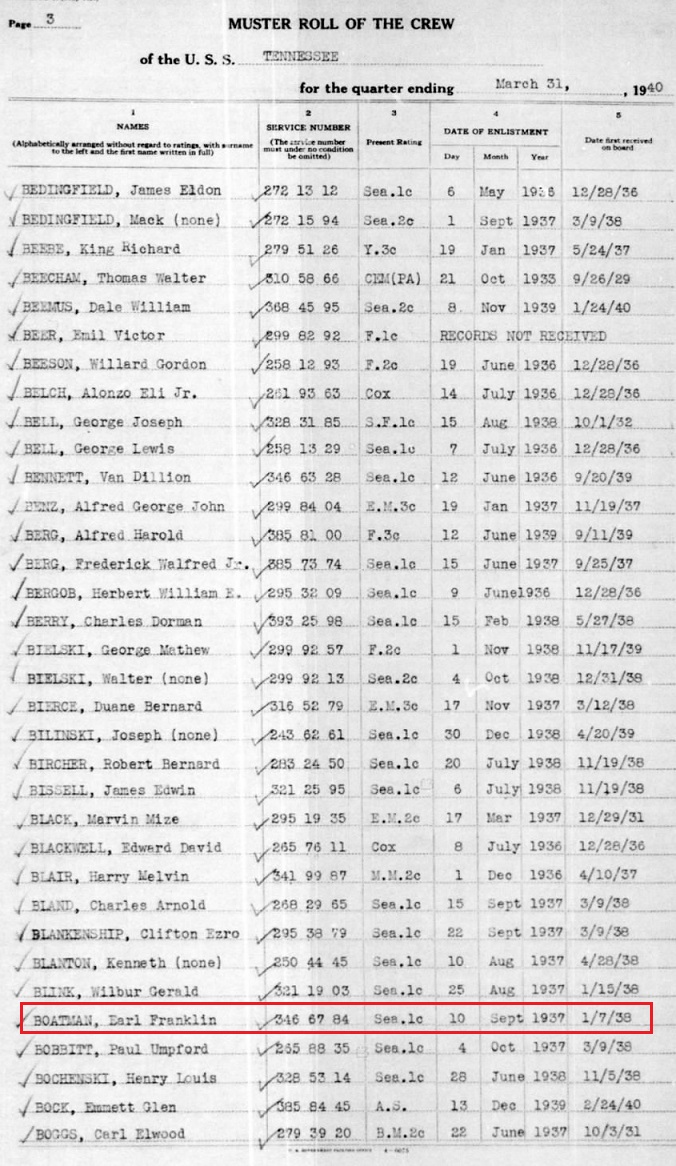
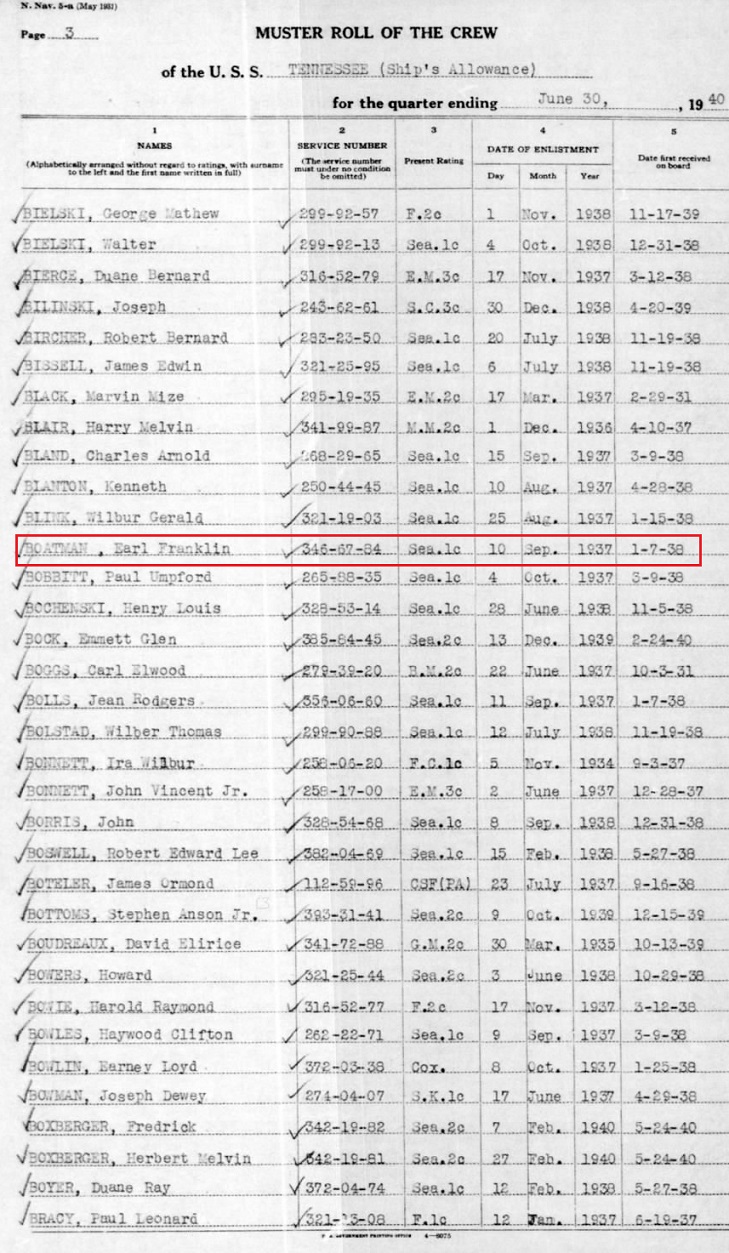
1941
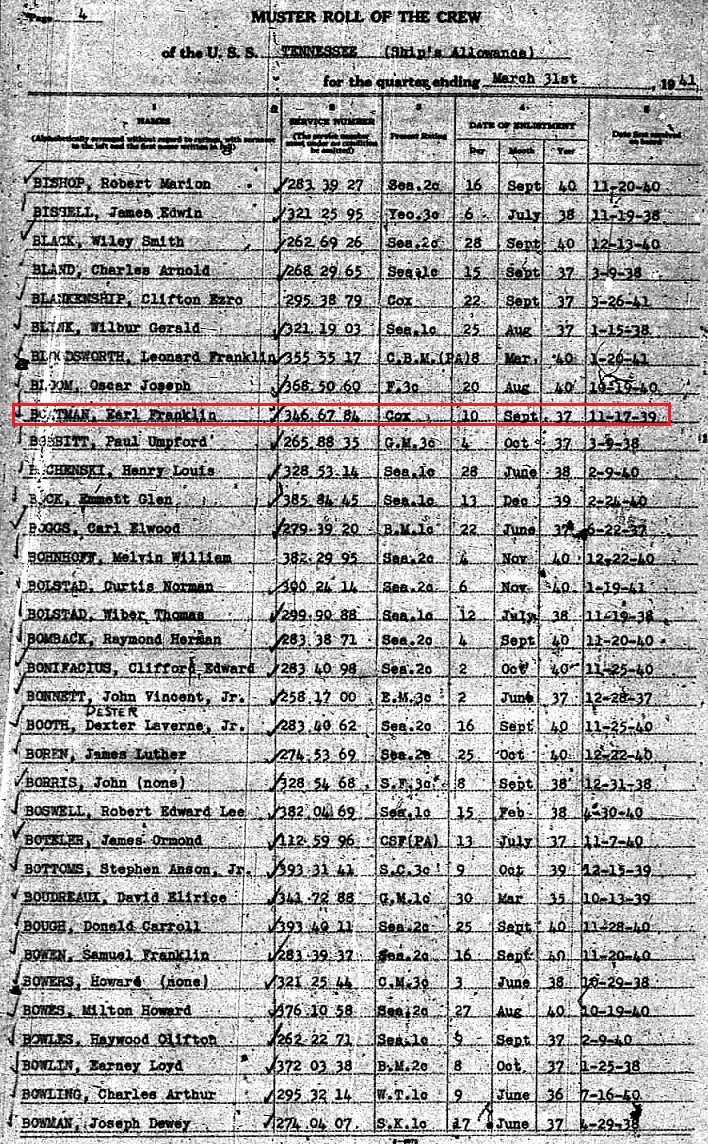
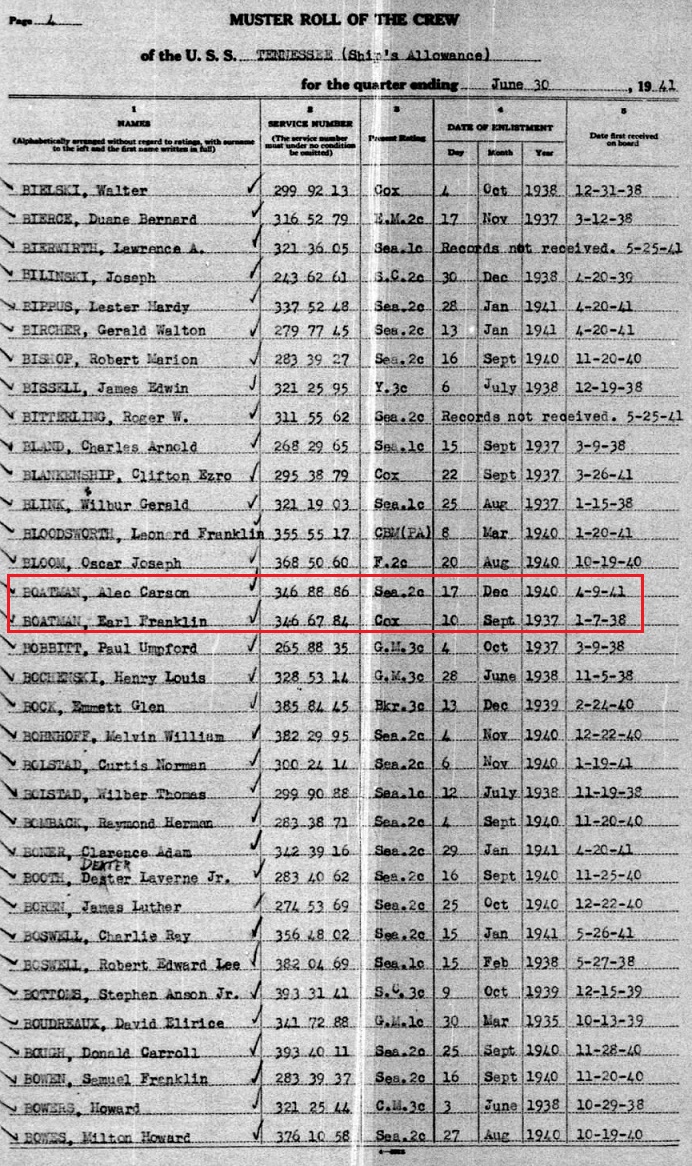
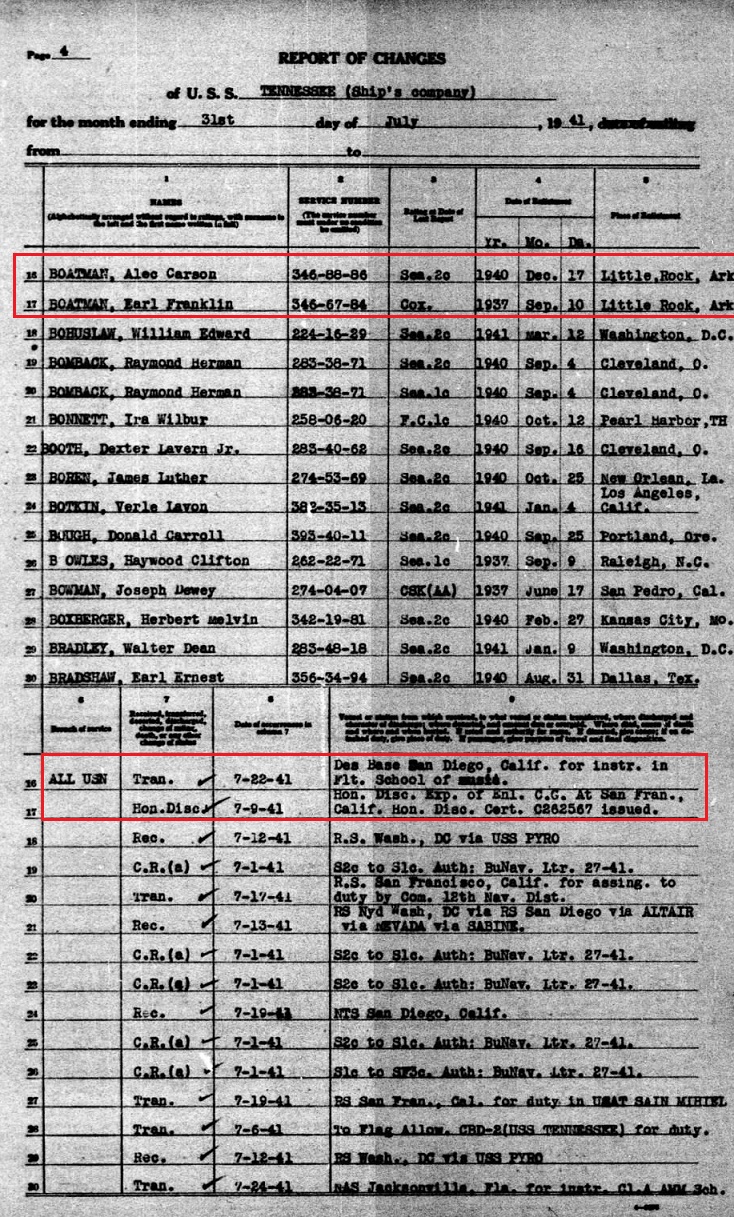
Attack Cargo Ship AKA-70 Tate
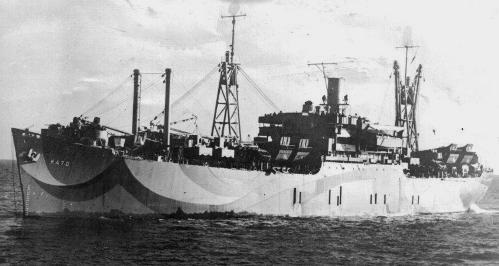
1943
USS Tate
See her WWII story below
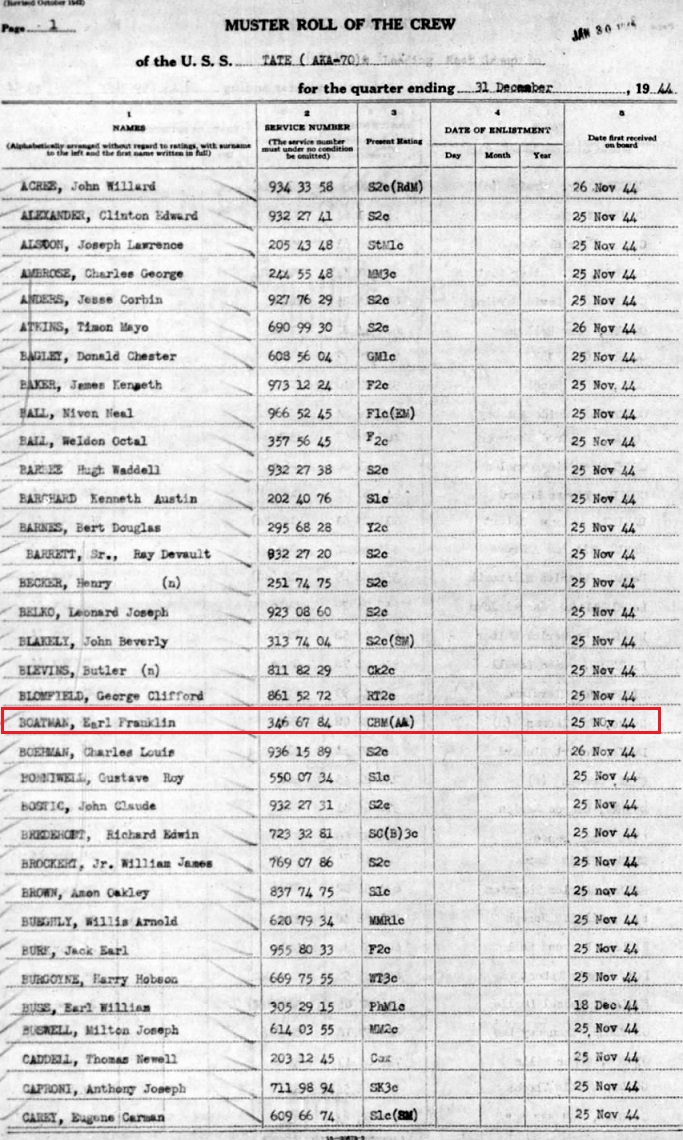
1944
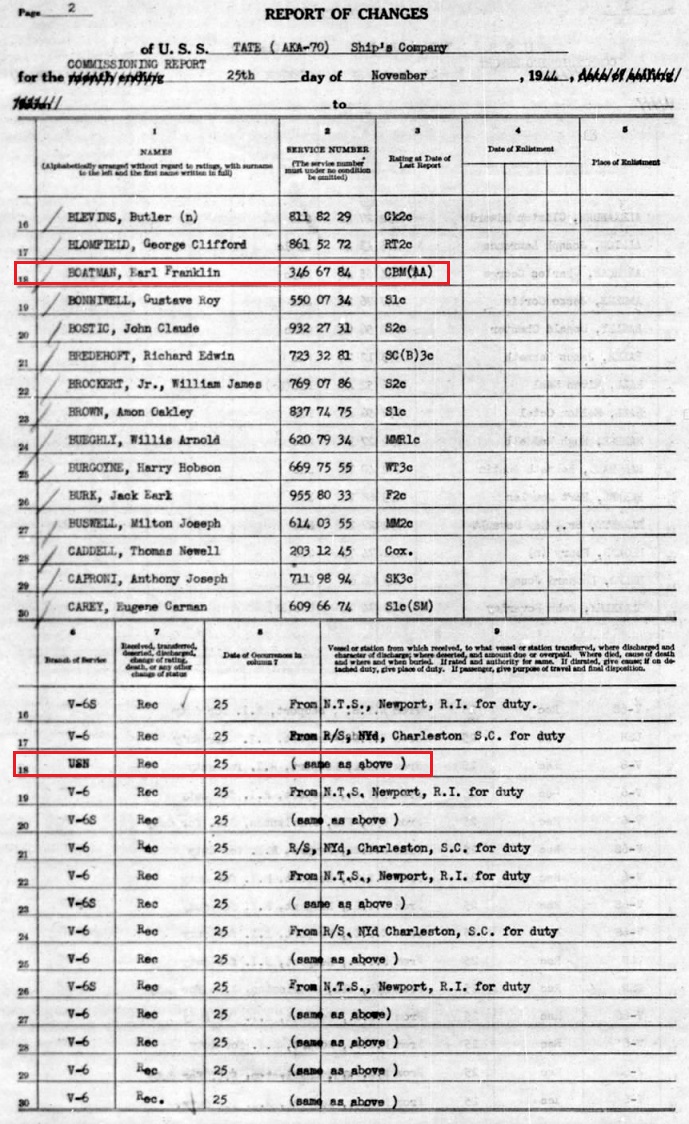

1945
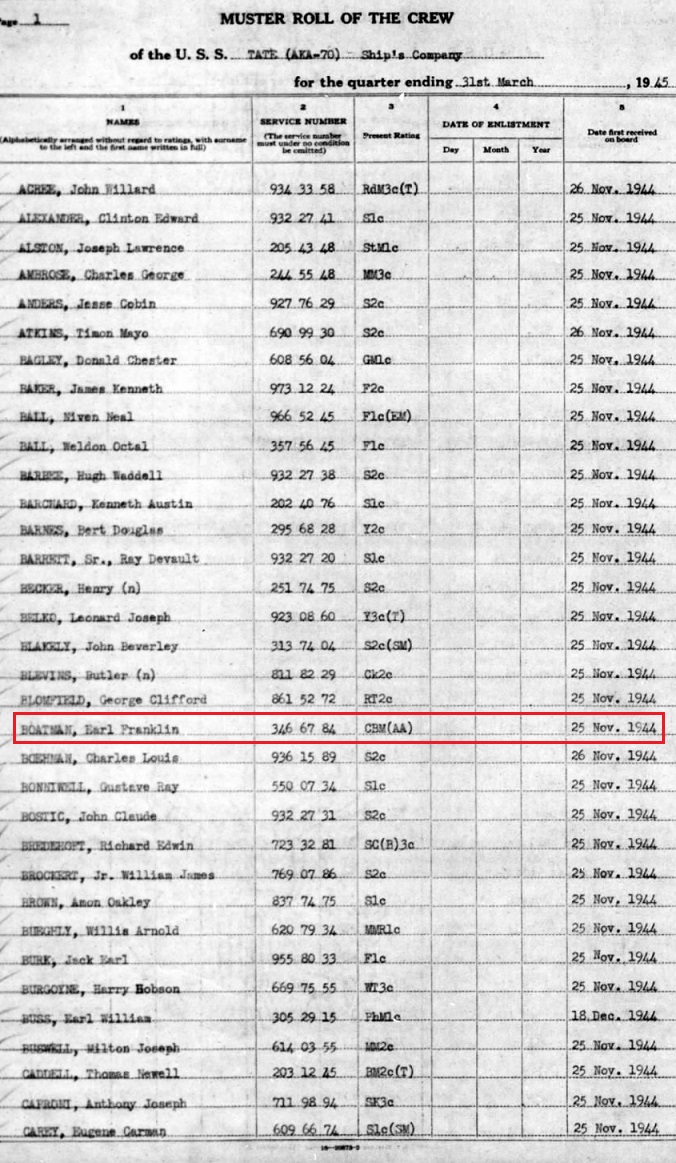
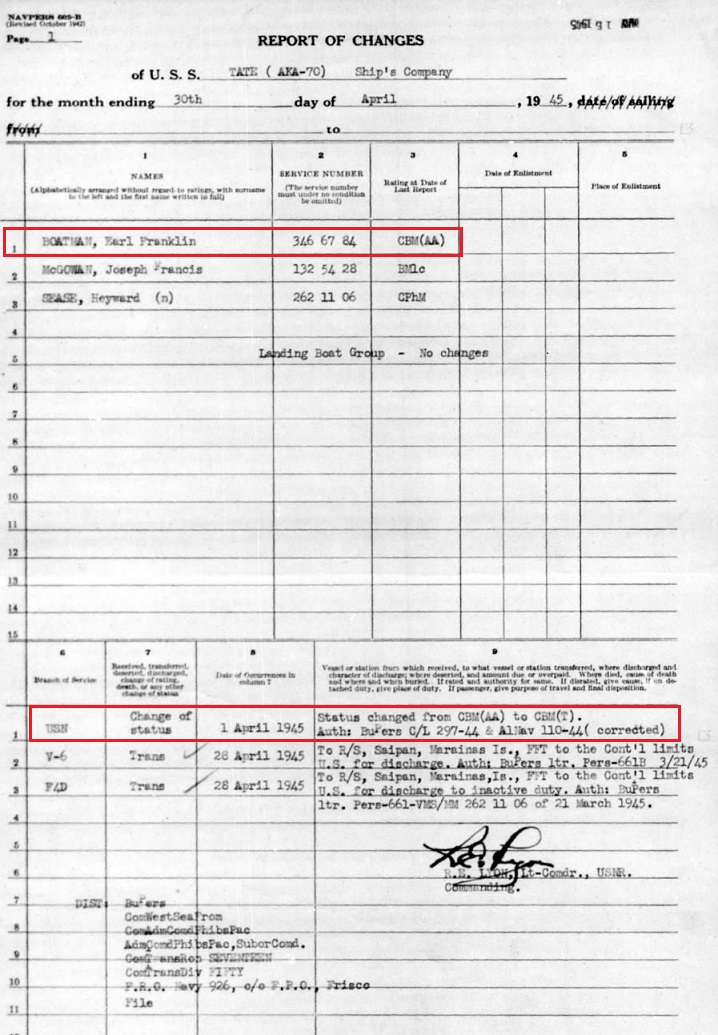
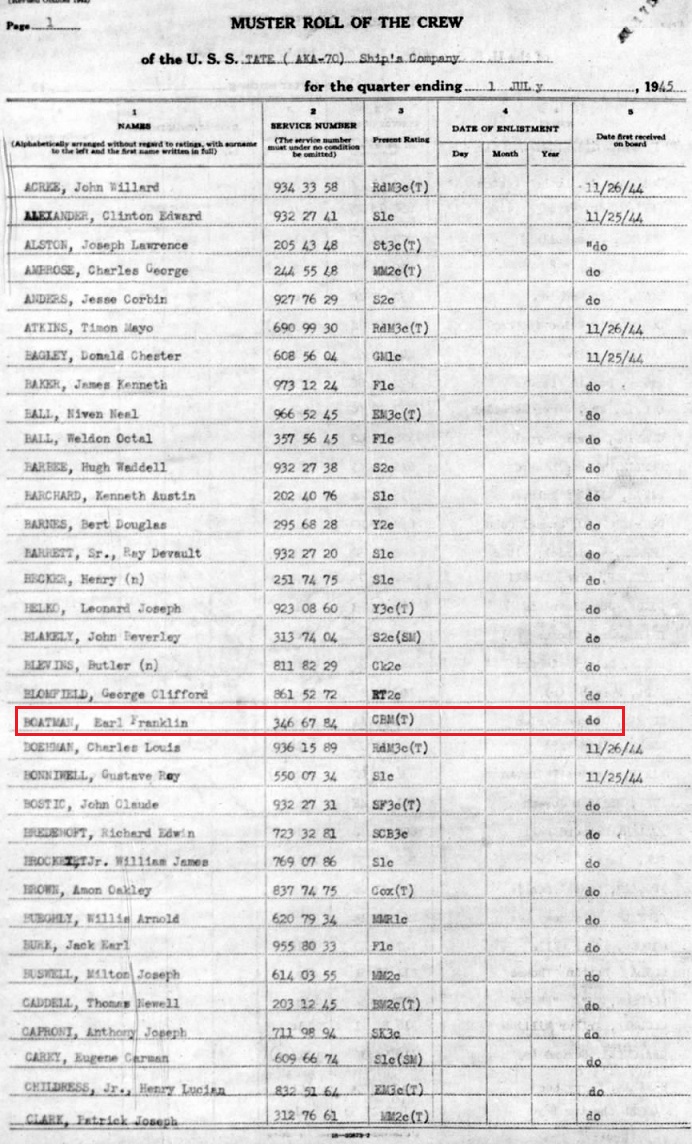
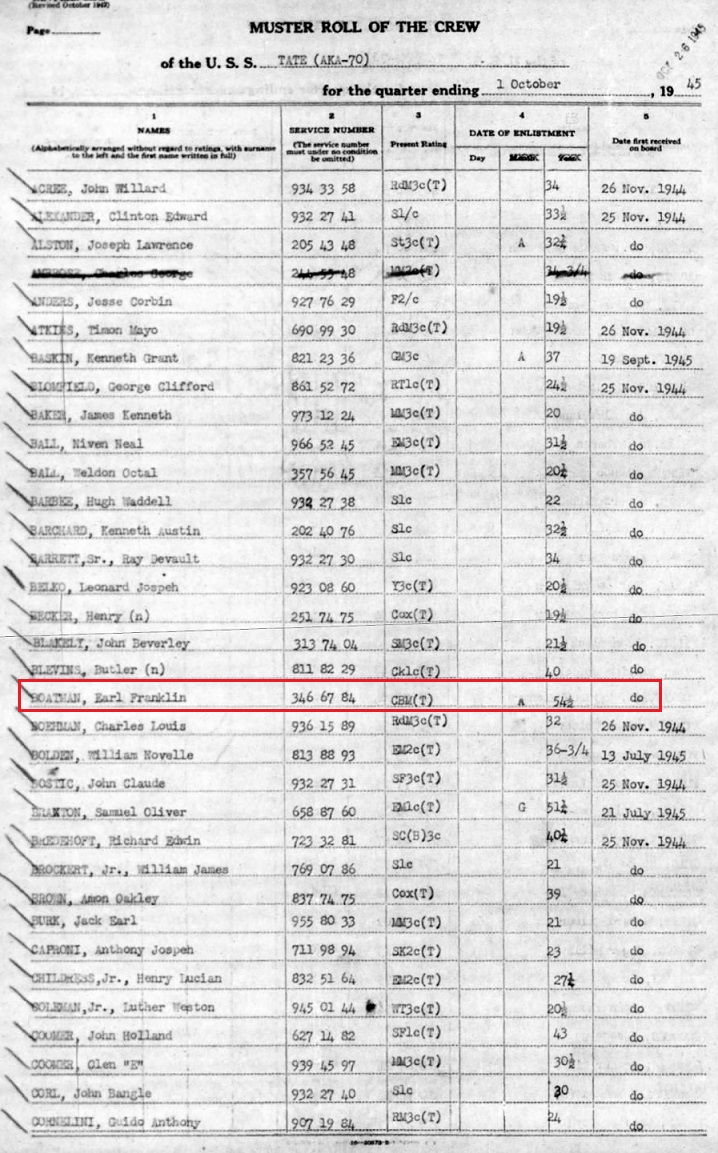
1946
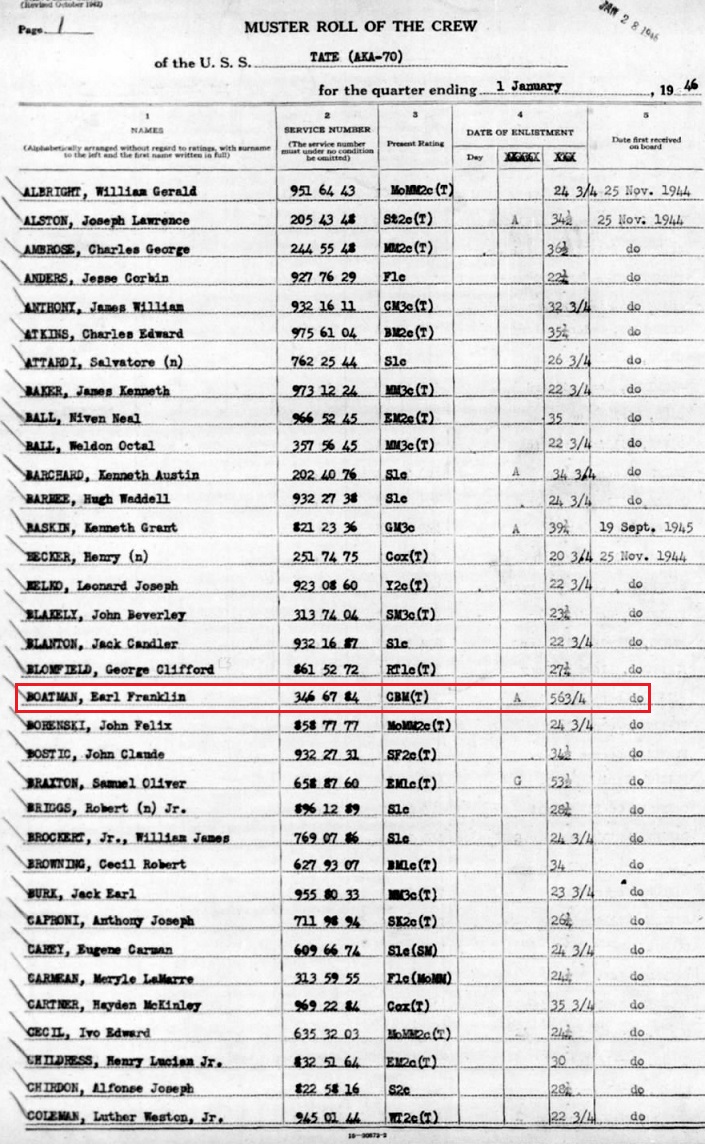
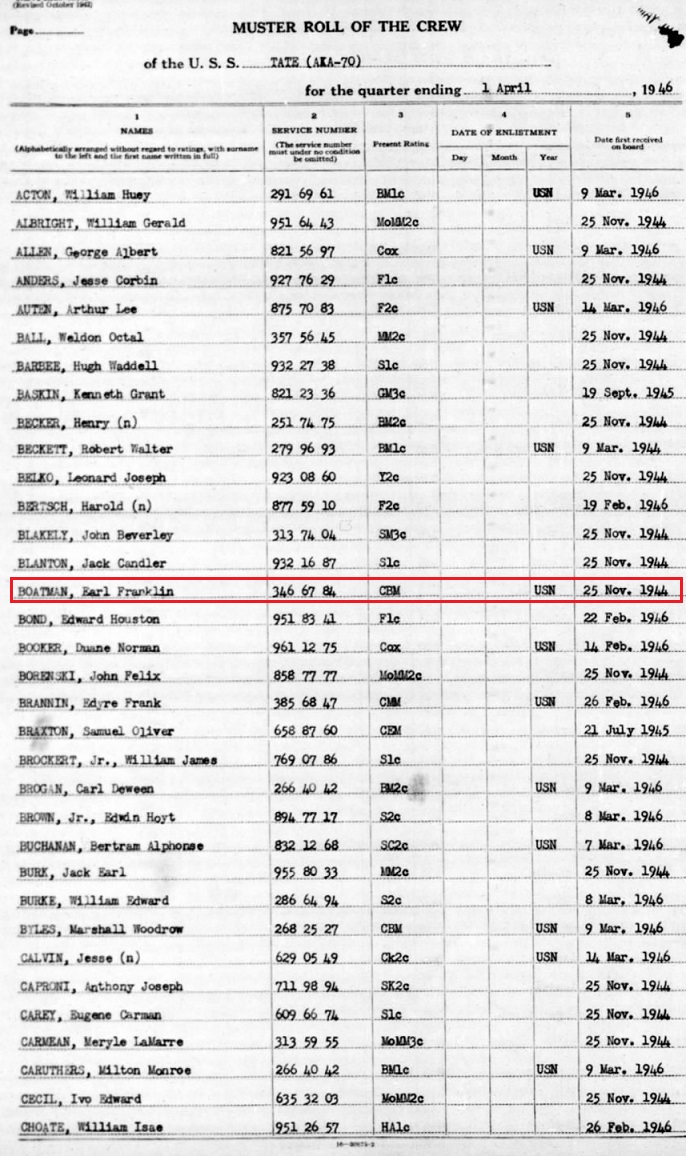
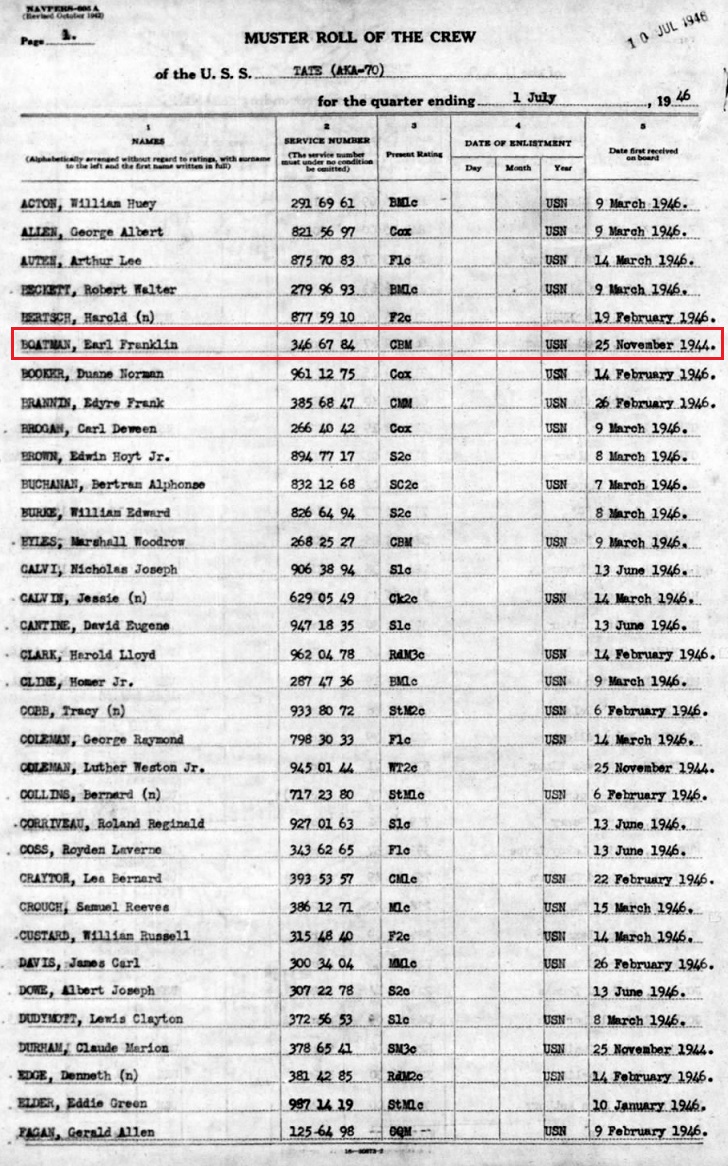
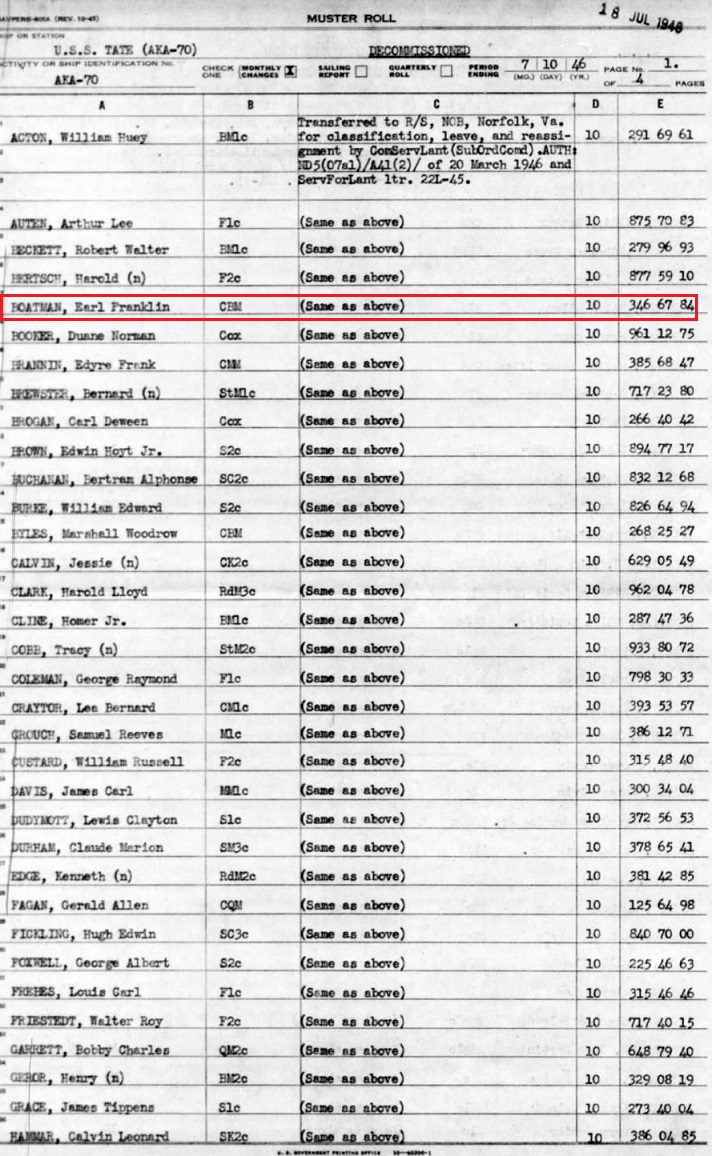
USS Tate
World War II, 1944-1945
The attack transport completed shakedown training in the Chesapeake Bay early in December and
steamed to Davisville, Rhode Island, to load Hawaii-bound cargo. She headed south on 30 December,
transited the Panama Canal between 4 and 6 January 1945, and reached Pearl Harbor on the 18th. She
remained in the Hawaiian Islands until 31 January when she departed Port Allen, Kauai Island, for
the Marshall Islands.
Tate reached Eniwetok on 4 February and joined Transport Squadron 17, which soon departed for the
Philippines. Proceeding via Ulithi Atoll and Kossol Roads, she reached Leyte Gulf on 21 February
and made a shuttle to Samar Island to discharge cargo and disembark passengers before beginning
preparations for the upcoming invasion of Okinawa. After training for the assault, she combat-loaded
the men and equipment of the Army's 77th Infantry Division at Tarranguna, Leyte, and on 21 March
departed the Philippines with the Western Islands Attack Group. Her destination was Kerama Retto,
a small group of islands located to the south and west of Okinawa, which became the fleet's
steppingstone to Okinawa itself. Her soldiers and equipment went into action against the islands
of Aka Shima, Kuba Shima, Yakabi Shima, and Zamami Shima. By the afternoon of 28 March, the
islands of Kerama Retto were secured, and Tate joined the other ships in a waiting area.
The attack transport remained in the vicinity of Okinawa through three weeks of April, also
participating in the assault on Ie Shima during her last week in the area. On the 22nd, she
headed for the Marianas, arriving at Saipan on 27 April. Five days later, she headed for the
Solomon Islands. Tate loaded marines and cargo at Guadalcanal and Tulagi between 8 and 17 May
before heading back, via Eniwetok, to the Marianas. Reaching Guam on 4 June, she disembarked the
marines and discharged her cargo. On the 13th, the attack transport got underway for the United
States.
On 25 July, Tate steamed out of San Francisco Bay to return to the combat zone. Stopping at Eniwetok
from 5 to 10 August, she reached Guam on the 14th, the day before the cessation of hostilities.
Post-war activities, 1945-1946
From there, she headed for Ulithi and thence, via Okinawa, to Jinsen, Korea, for occupation duty.
Tate returned to the Philippines early in October, visiting Manila and Subic Bay. After stops at
Tsingtao, China, and Okinawa in late November, the attack transport steamed back to the United
States, arriving at Seattle on 13 December. She remained there until 26 February 1946, when she
got underway for San Francisco. The ship loaded cargo between 1 and 16 March and then headed for
Eniwetok and Kwajalein.
She discharged her cargo at the two atolls and got underway for Panama on 4 April. Tate reached the
Canal Zone on 23 April; but, instead of entering the canal, she remained on the Pacific side to help
in the final removal of Americans from the air base at Seymour Island in the Galapagos. She returned
to Balboa on 20 May, transited the canal, and reached Hampton Roads on 28 May.
Following World War II USS Tate was assigned to Occupation and China service in the Far East
Decommissioning and sale
Tate was decommissioned on 10 July 1946
|
|
|
|